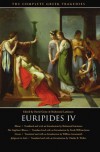Currently reading
A Medieval Chinese Capital Comes to Life

Kaifeng street scene painted by Zhang Zeduan (1085-1145) - right click to see detail
The Song (Sung) dynasty (960-1279), one of the apogees of Chinese civilization, is divided by historians into two periods, each terminated by invasion by northern "barbarians" from Mongolia. The Northern Song ended in 1126/7 when the Jurchen (Jin) conquered northern China - including the historical heartland of the Chinese culture along the Yellow River - and as many Chinese as were able fled south, where the Southern Song established themselves south of the Yangtze River. (The Jin and the Southern Song were both swept away by the Mongol invasion.)
Dongjing meng Hua lu (known in English as The Eastern Capital: A Dream of Splendor) is an act of literary resurrection by an otherwise unknown author, Meng Yuan-lao (ca. 1090 - 1150). Begun no later than 1147 and published in 1187, Dongjing meng Hua lu is a very detailed evocation of the Northern Song capital, Bian (Kaifeng), shortly before its fall.
The writing of local chronicles, which described local events and activities of local VIPs but also the topography of the city, was already an established activity of the literati. What makes Meng's text so unique is that not only does he describe the fortifications, the gates, temples, palaces and districts of the city (sometimes street by street), but he describes the shops and inns, the life in the streets and alleys, the festivals and the customs of the inhabitants of Kaifeng, including which foods were available in which seasons(*) and which wine shops were of highest quality. The imperial palace complex and some imperial rites are described, but Meng apparently did not move in the highest (or even the higher) circles. His focus is on the city as seen and lived by the ordinary (but not impoverished) citizen.
The text is certainly not as charmingly written as some of the later pieces about Hangzhou and other cities I've read; nonetheless, there were moments when I felt I was walking through the streets of a late medieval Chinese city marveling at the richness of detailed life. However, since he was recording for future generations the splendor of a lost capital, he omitted any hint that life might have been somewhat less than marvelous for many (most?) of the inhabitants or that there could possibly be some dark sides to the city, at least in the first three books (see below).
Though Meng apologized for his "vulgar" language in his preface (apparently the text is written in a mix of colloquial Chinese and not extremely well handled literary Chinese), Dongjing meng Hua lu became influential and was imitated in later times. Thus we now have valuable texts in which Hangzhou, the capital of the Southern Song, and later capitals come to life again on the page. Unfortunately, Meng's text seems to be the first such. How I would love to be able to read something like this about the former great capitals Luoyang and Chang-an,(**) but that is denied to us all.
Der Traum von Hua in der Östlichen Hauptstadt: Meng Yuanlaos Erinnerungen an die Hauptstadt der Song (1996) is a doctoral dissertation by Brigitte Kölla which offers a translation of three of the ten "books" (juan) which comprise Meng's text.(***) It is a fine piece of very readable scholarship providing a very informative introduction and explanatory notes which are longer than Meng's text itself. Unfortunately, it appears that Kölla didn't bother to publish the remaining 70 % of the text in the intervening time.(****) Too bad...
(*) Including such delights as freshly fried sheep appendix and a kind of blood noodles made with flour, sheep's blood, ginger, coriander and a number of other spices.
(**) And classical Athens, Rome, Babylon, Persepolis, Alexandria, etc., etc.
(***) Shorter excerpts have been translated into English. Project Gutenberg offers the full Chinese text. (!)
(****) A web search finds her on the staff at the Asien-Orient-Institut of the University of Zurich.
 3
3












